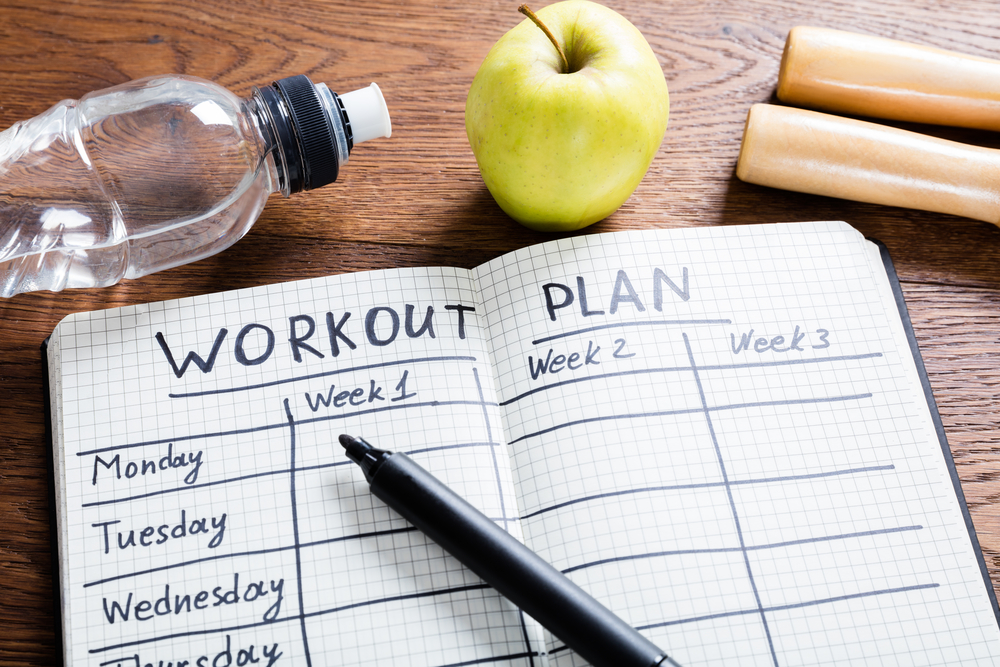Having a consistent workout schedule is crucial for building up muscles and achieving your fitness goals.
A well-planned routine helps you stay motivated, track your progress, and make the most of your time at the gym.
In this post, we'll go over how to create your own workout schedule to effectively target and build the muscles you desire.
Whether you're a beginner or a seasoned fitness enthusiast, this guide will provide you with the tools you need to design a program that works for you.
Assessing your goals and needs
Assessing your goals and needs is an essential first step in creating your own workout schedule.
It's important to have a clear idea of what you want to achieve through your workouts, whether it's weight loss, muscle building, or overall general health.
This will help guide your exercise selections and ensure that you're targeting the right muscles.
Next, consider your current fitness level and any physical limitations you may have.
If you're new to exercise, you'll want to start with low-impact, beginner-level exercises to avoid injury and build up your strength and endurance gradually.
If you have any injuries or chronic health conditions, make sure to consult with a healthcare professional before starting any new exercise routine.
Finally, determine the frequency and duration of your workouts based on your goals and schedule.
If your primary goal is muscle building, you'll likely need to work out more frequently, at least 3-4 times a week, to give your muscles enough time to recover and grow.
If you're more focused on weight loss or general health, 2-3 workouts per week may be sufficient.
Remember to also factor in rest days to allow your muscles time to recover and rebuild.
Choosing your exercises
Choosing the right exercises for your workout schedule is key to building up the muscles you desire.
To target specific muscle groups, it's important to select exercises that focus on those areas.
For example, if you want to build up your chest muscles, you might include push-ups or bench press in your routine.
For leg muscles, squats or lunges might be good choices.
In addition to targeting specific muscle groups, it's also important to incorporate a variety of exercises into your routine to ensure full-body muscle development.
This can help prevent imbalances and improve overall functional strength.
There are many different types of equipment you can use to challenge your muscles, including free weights, resistance bands, and bodyweight exercises.
Free weights, such as dumbbells and barbells, allow you to increase or decrease the weight as needed, while resistance bands offer a more flexible form of resistance.
Bodyweight exercises, like push-ups and squats, use your own body weight as resistance and can be performed anywhere with minimal equipment.
Experiment with different types of equipment to find what works best for you.
Scheduling your workouts

Once you've determined your fitness goals, assessed your needs, and chosen your exercises, it's time to schedule your workouts.
Planning your workouts for the week ahead of time can help you stay organized and ensure that you make time for physical activity.
When scheduling your workouts, make sure to take into account any rest days and other commitments you may have.
It's important to allow your muscles time to recover, so make sure to include at least one or two rest days in your schedule.
It's also a good idea to have some flexibility in your schedule to allow for unexpected changes or emergencies.
Finally, don't be afraid to adjust your schedule as needed.
If you find that you're consistently unable to stick to your planned workouts, it may be necessary to rearrange your schedule or make adjustments to the type or duration of your exercises.
The key is to find a routine that works for you and that you can stick to consistently.
Staying motivated and consistent
Staying motivated and consistent is crucial for achieving your fitness goals.
One way to stay motivated is to set small, achievable goals for yourself.
This can help you track your progress and keep you motivated to continue working towards your larger goals.
Having a workout buddy or joining a fitness group can also provide accountability and motivation.
Knowing that someone else is counting on you to show up for your workouts can be a powerful motivator.
Finally, mixing up your workouts can help prevent boredom and keep you engaged.
Try incorporating new exercises or trying out different types of workouts, such as yoga, dance, or HIIT.
This can help keep your workouts fresh and challenging, and may even lead to better results.
Overall, the key to staying motivated and consistent is to find activities that you enjoy and that you can stick with in the long term.
Conclusion
In conclusion, creating your own workout schedule is a great way to ensure that you're targeting the muscles you want to build and making progress towards your fitness goals.
By assessing your goals and needs, choosing the right exercises, scheduling your workouts, and staying motivated and consistent, you can design a program that works for you.
Don't be afraid to be flexible and make adjustments as needed, and remember to have fun and enjoy the journey towards a stronger, healthier you!


